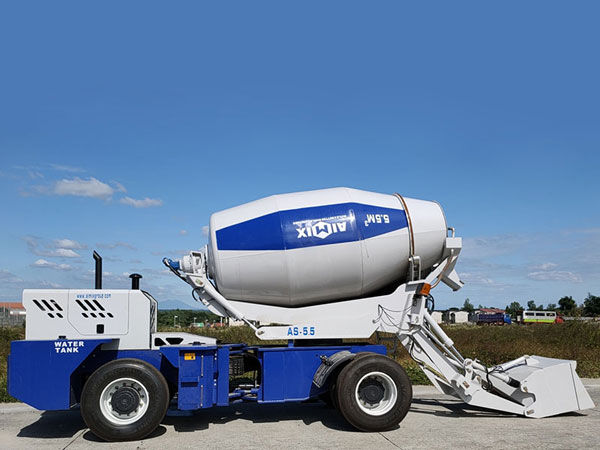Acoustic Emission Monitoring for Early Crack Detection in Concrete Mixer Drums
- aimixglobal2024
- 2025年7月7日
- 讀畢需時 3 分鐘
Concrete mixers are vital in construction projects. Their efficiency and reliability directly impact project outcomes. Early crack detection in mixer drums is crucial for maintaining their performance. Acoustic emission monitoring offers a solution for identifying cracks early. This technique applies to the self loading concrete mixer, mobile concrete mixer, and small concrete mixer. In this article, we explore the benefits and applications of acoustic emission monitoring. Our goal is to provide valuable insights for customers seeking reliable and efficient construction equipment.

Understanding Acoustic Emission Monitoring
Acoustic emission monitoring detects sound waves produced by cracks and structural changes. Sensors placed on mixer drums capture these emissions. This enables operators to identify early signs of damage.
By monitoring acoustic emissions, companies prevent major failures and costly repairs. This technique helps maintain the structural integrity of mixer drums. Understanding acoustic emission monitoring allows operators to enhance their maintenance practices. It ensures reliable performance and prolongs equipment lifespan.
Benefits of Early Crack Detection
Early crack detection offers several advantages for concrete mixers. It prevents minor issues from developing into major failures. This leads to reduced downtime and repair costs.
Moreover, early detection improves safety by addressing potential hazards promptly. It enhances the reliability and efficiency of mixers. By investing in early crack detection, companies achieve better equipment management and project outcomes. These benefits are essential for maintaining competitiveness in the construction industry.
Applications in Self Loading Concrete Mixers
Self loading concrete mixers combine mixing, loading, and transporting functions. Acoustic emission monitoring enhances their reliability and safety.
This technique ensures early identification of structural issues in mixer drums. It reduces the risk of unexpected failures and downtime. Self loading mixers benefit from early crack detection by enhancing their efficiency and reducing maintenance costs. This supports project timelines and customer satisfaction.
Advantages for Mobile Concrete Mixers
The mobile concrete mixer offers versatility and adaptability on construction sites. Acoustic emission monitoring improves their reliability and performance.
Monitoring ensures immediate identification of cracks and structural changes. It enhances safety and reduces repair costs. By adopting early crack detection, mobile mixers maintain consistent performance in dynamic environments. This ensures successful project outcomes and improves customer confidence.
Enhancements in Small Concrete Mixers
Small concrete mixers serve niche markets and small-scale projects. Acoustic emission monitoring helps maintain their structural integrity.
Early crack detection guarantees reliable performance in limited-access areas. It prevents costly repairs and delays. By utilizing this technique, the small concrete mixer machine provides efficient and dependable solutions. They meet the needs of contractors seeking reliability and flexibility.

Challenges and Considerations in Acoustic Emission Monitoring
Implementing acoustic emission monitoring presents challenges. Operators must ensure proper sensor placement and data interpretation.
Training and regular equipment checks optimize monitoring effectiveness. Companies should invest in understanding and applying this technique. By addressing these challenges, operators enhance mixer reliability and performance. This ensures customer satisfaction and successful project outcomes.
Future Prospects for Acoustic Emission Technology
Acoustic emission technology has a promising future. Advancements in sensor design and data analysis offer improved systems.
As the construction industry evolves, demand for reliable monitoring will grow. It aligns with goals for improved safety and equipment management. By investing in acoustic emission monitoring, companies can stay competitive. This trend will drive the industry towards more innovative and effective solutions.
Conclusion
Acoustic emission monitoring is essential for early crack detection in concrete mixer drums. It offers significant benefits for self loading, mobile, and small mixers. Early detection enhances safety, reliability, and equipment management. Understanding and adopting this technique leads to successful construction outcomes. As the industry evolves, acoustic emission monitoring paves the way for reliable and innovative solutions. Embracing this trend ensures a competitive edge and commitment to high-quality construction practices.




留言